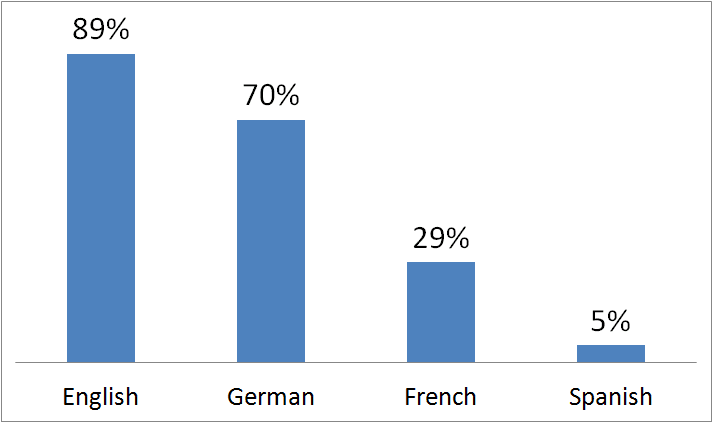 | ||
Regional languages Official: Frisian (2.50%), English (BES Islands), Papiamento (Bonaire); Not official: Dutch Low Saxon (10.9%) Limburgish (4.50%) (not official) Main immigrant languages Varieties of Arabic (1.5%), Turkish (1.5%), Berber languages (1%)See further: Immigration to the Netherlands Main foreign languages Common keyboard layouts US international QWERTY | ||
The official national language of the Netherlands is Dutch, spoken by almost all people in the Netherlands. Dutch is also spoken and official in Aruba, Belgium, Curaçao, Sint Maarten and Suriname. It is a West Germanic, Low Franconian language that originated in the Early Middle Ages (c. 470) and was standardised in the 16th century.
Contents
- Map of Netherlands
- Frisian dialects
- Low Saxon dialects
- Low Franconian dialects
- Central Franconian dialects
- Dialects fully outside the Netherlands
- References
Map of Netherlands
There are also some recognised provincial languages and regional dialects.
However, both Low Saxon and Limburgish spread across the Dutch-German border and belong to a common Dutch-German dialect continuum.
The Netherlands also has its separate Dutch Sign Language, called Nederlandse Gebarentaal (NGT). It is still waiting for recognition and has 17,500 users.
There is a trend of learning foreign languages in the Netherlands: between 90% and 93% of the total population are able to converse in English, 71% in German, 29% in French and 5% in Spanish.
Frisian dialects
West Frisian is an official language in the Dutch province of Friesland (Fryslân in West Frisian). The government of the Frisian province is bilingual. Since 1996 Frisian has been recognised as an official minority language in the Netherlands under the European Charter for Regional or Minority Languages, although it had been recognised by the Dutch government as the second state language (tweede rijkstaal), with official status in Friesland, since the 1950s.
Low Saxon dialects
Low Franconian dialects
Central Franconian dialects
Note that Ripuarian is not recognised as a regional language of the Netherlands.
Dialects fully outside the Netherlands
Luxembourgish is divided into Moselle Luxembourgish, West Luxembourgish, East Luxembourgish, North Luxembourgish and City Luxembourgish. The Oïl dialects in the Benelux are Walloon (divided into West Walloon, Central Walloon, East Walloon and South Walloon), Lorrain (including Gaumais), Champenois and Picard (including Tournaisis).
